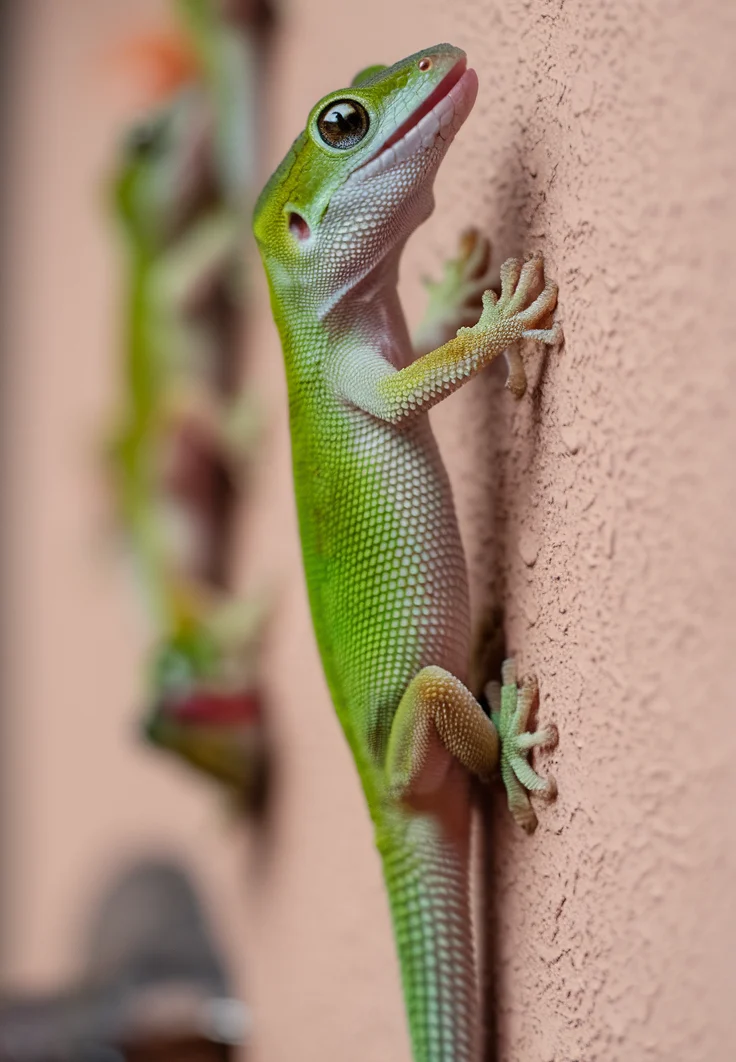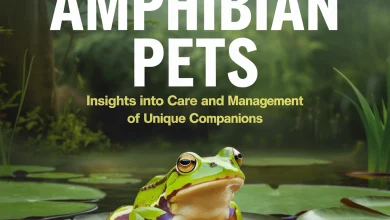The Gecko Guide: Everything You Need to Know About Keeping Geckos as Pets

Geckos, with their vibrant colors, charming personalities, and fascinating behaviors, make excellent pets for both beginners and experienced reptile enthusiasts. These small lizards are easy to care for and provide endless entertainment with their unique antics. If you’re considering bringing a gecko into your home, this guide will help you understand what it takes to keep these delightful reptiles healthy and happy.
Why Geckos Make Great Pets
- Low Maintenance
- Geckos are relatively easy to care for compared to other reptiles. They don’t require a lot of space, and their dietary needs are simple, making them an ideal choice for beginners.
- Quiet and Calm
- Unlike some pets, geckos are quiet and won’t disturb your peace. They are calm creatures that spend most of their time exploring their environment or resting.
- Variety of Species
- There are many different species of geckos, each with its own unique appearance and care requirements. This variety allows you to choose a gecko that best fits your interests and lifestyle.
- Fascinating Behavior
- Geckos exhibit a range of interesting behaviors, from their method of communication through chirps and clicks to their incredible ability to climb smooth surfaces using their specialized toe pads.
Popular Pet Geckos and Their Care
1. Leopard Geckos
- Hardy and Easy to Care For: Leopard geckos are one of the most popular gecko species due to their low-maintenance needs and friendly nature. They are perfect for beginners.
- Habitat: They require a dry environment with a warm and cool side in their tank. A simple setup with a hide, a water dish, and a few rocks or branches for climbing is sufficient.
- Diet: Leopard geckos are insectivores and thrive on a diet of crickets, mealworms, and occasional waxworms, dusted with calcium and vitamin D3 supplements.
2. Crested Geckos
- Arboreal and Colorful: Crested geckos are known for their striking appearance and unique crest that runs from their eyes to their tail. They are arboreal, meaning they love to climb and need a vertical enclosure.
- Habitat: Provide a tall tank with plenty of branches, vines, and plants for climbing. They require moderate humidity and a temperature gradient.
- Diet: Crested geckos can eat a commercial diet specifically formulated for them, supplemented with occasional insects like crickets or small roaches.
3. Tokay Geckos
- Vocal and Vibrant: Tokay geckos are larger and more vibrant than many other gecko species. Known for their loud calls, they are best suited for experienced keepers due to their territorial nature.
- Habitat: A spacious enclosure with plenty of hiding spots and vertical climbing space is essential. They need high humidity and a warm environment.
- Diet: Tokay geckos eat a variety of insects, such as crickets, mealworms, and cockroaches. They may also enjoy the occasional small mouse.
Setting Up a Gecko-Friendly Environment
- Proper Enclosure
- The size and type of enclosure depend on the species of gecko. Generally, geckos need a well-ventilated tank with secure lids to prevent escape. For arboreal species like crested geckos, a taller tank is necessary, while terrestrial species like leopard geckos do well in a standard horizontal tank.
- Temperature and Humidity Control
- Most geckos need a warm environment with a temperature gradient, allowing them to thermoregulate by moving between warm and cool areas. Use heat lamps or under-tank heaters to achieve the right temperatures. Humidity levels vary by species but generally range from moderate to high.
- Substrate and Decor
- The substrate in the tank should be suitable for the specific gecko species. For example, paper towels or reptile carpet work well for leopard geckos, while a mix of soil and bark is better for crested geckos. Include hides, plants, and branches to create a natural environment.
- Lighting
- While many geckos do not require UVB lighting, providing it can benefit their health, particularly for species like crested geckos. Ensure a day/night cycle with appropriate lighting.
Daily Care and Maintenance
- Feeding Schedule
- Geckos typically need to be fed every day or every other day, depending on the species and age. Young geckos eat more frequently, while adults may eat less often. Always provide fresh water.
- Health Monitoring
- Regularly observe your gecko for signs of good health, such as clear eyes, regular shedding, and a healthy appetite. Watch for any signs of illness, like lethargy, weight loss, or abnormal droppings, and consult a vet if needed.
- Handling and Socialization
- While some geckos enjoy handling, others may be more skittish. Handle your gecko gently and infrequently, allowing them time to get accustomed to your presence. Over time, many geckos become more comfortable with handling.
Fun Facts About Geckos
- Sticky Toes: Geckos have specialized toe pads that allow them to climb smooth surfaces, even upside down. This ability comes from tiny hair-like structures called setae on their toes.
- Tail Autotomy: Many geckos can drop their tails as a defense mechanism to escape predators. The tail will regrow, but it may not look exactly like the original.
- Night Vision: Most geckos are nocturnal and have excellent night vision, allowing them to see in low light conditions and hunt for food after dark.
Conclusion
Geckos are fascinating and rewarding pets that can bring a touch of the exotic into your home. With the right care, environment, and attention, they can thrive and become a cherished member of your household. Whether you’re captivated by the vivid colors of a crested gecko, the calm demeanor of a leopard gecko, or the vocal personality of a tokay gecko, there’s a gecko species that’s perfect for you.



